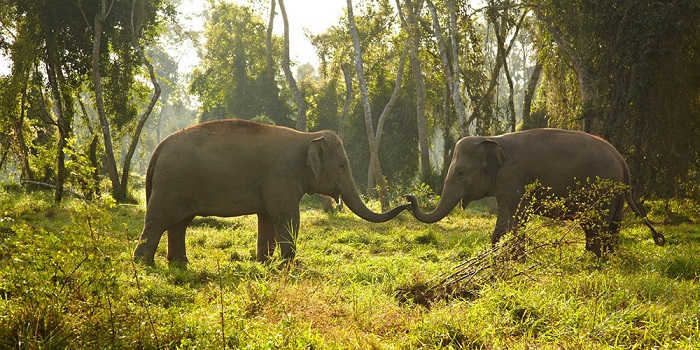JHAPA: The number of native elephants in Jhapa has gradually increased recently.
Meghraj Rai, Chief of the Division Forest Office in Jhapa, reported that the population of native elephants in the district has risen significantly over the past five years.
“There were 10-12 native elephants as of 2075 BS, but the number has now exceeded 30,” Rai informed.
He explained that the increase in the number of native tuskers is due to elephants migrating from India in search of food.
Previously, elephants were only seen in certain areas, but now they are being noticed across the district.
Rai also noted that the incidence of damage to life and property has risen due to elephant rampages, particularly after the declaration of super zones for paddy, maize, and other crops in the district.
“Elephants are reaching areas where they have never been before,” he said, adding that the growing maize cultivation has attracted more elephant activity.
The construction of bridges, roads, and other structures on their traditional routes has led to changes in their paths.
Rai pointed out that elephants entering village settlements due to these route changes have resulted in increased damage to life and property.
He emphasized the need for a special master plan to address the human-elephant conflict.
“There needs to be a step-by-step approach to human-elephant coexistence,” he said, adding, “There is currently no master plan for elephant control, and all three tiers of government need to pay special attention to this issue.”
He also mentioned that the National Trust for Nature Conservation is taking steps to reduce complications caused by elephants.
“If we can identify elephant-affected areas and provide collective insurance for locals, crop insurance, and physical infrastructure, it would create a more secure environment for people to live confidently,” he added.









Comment